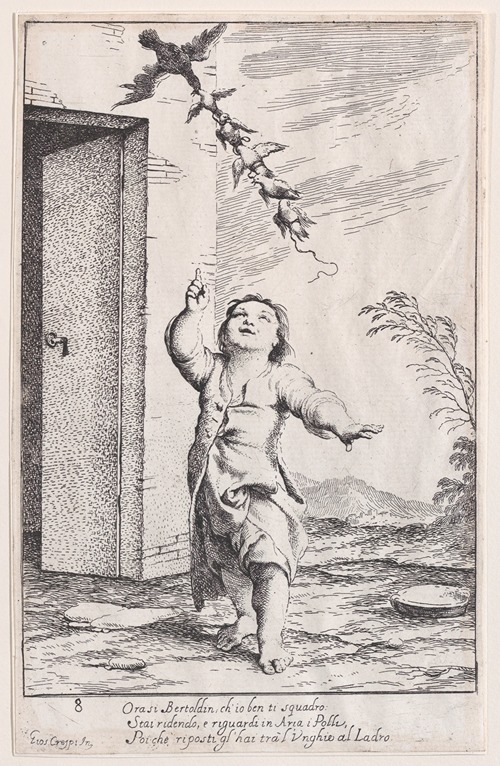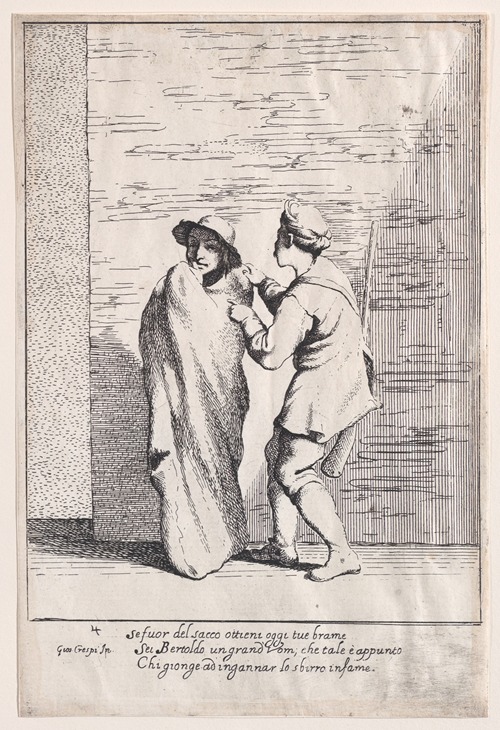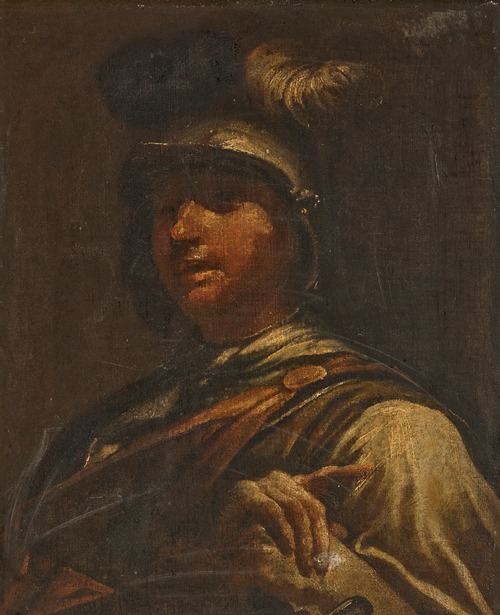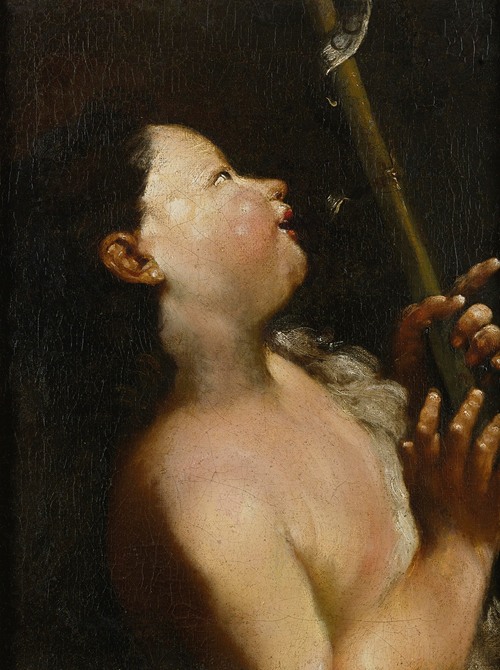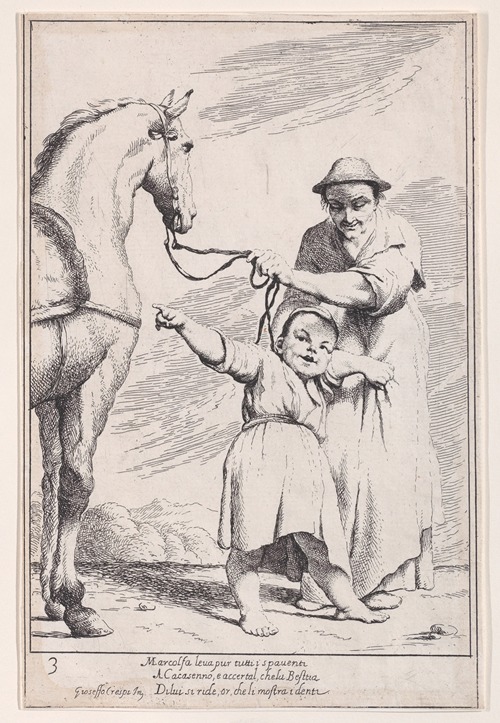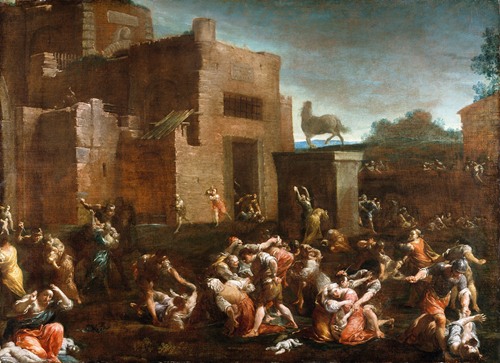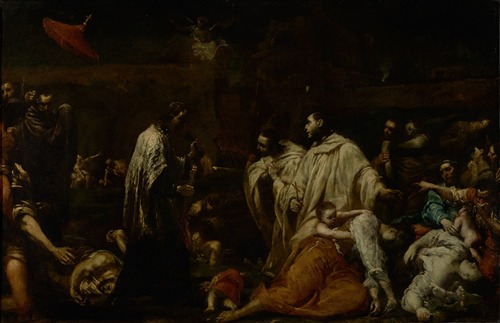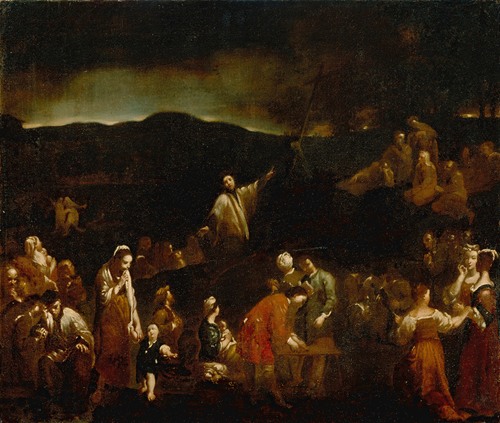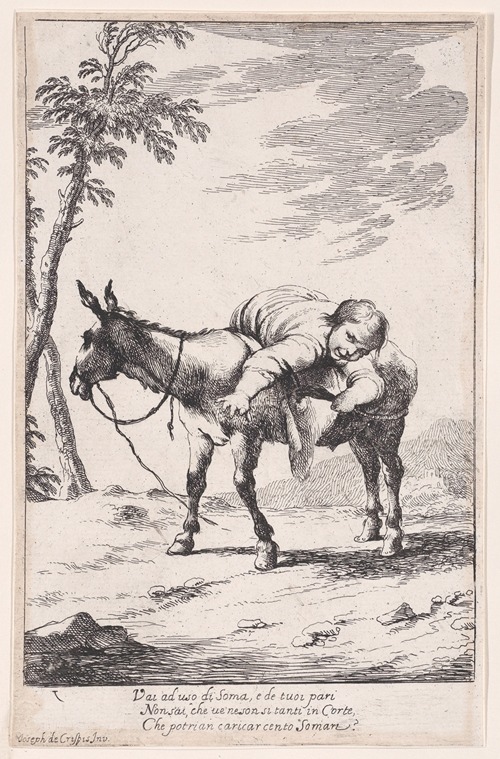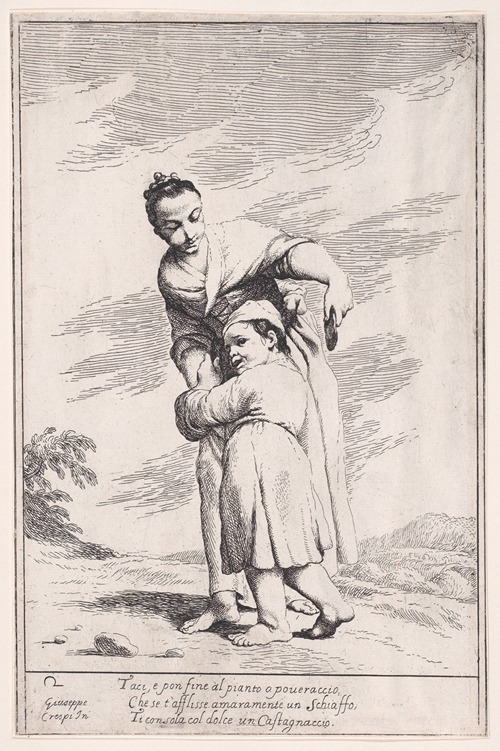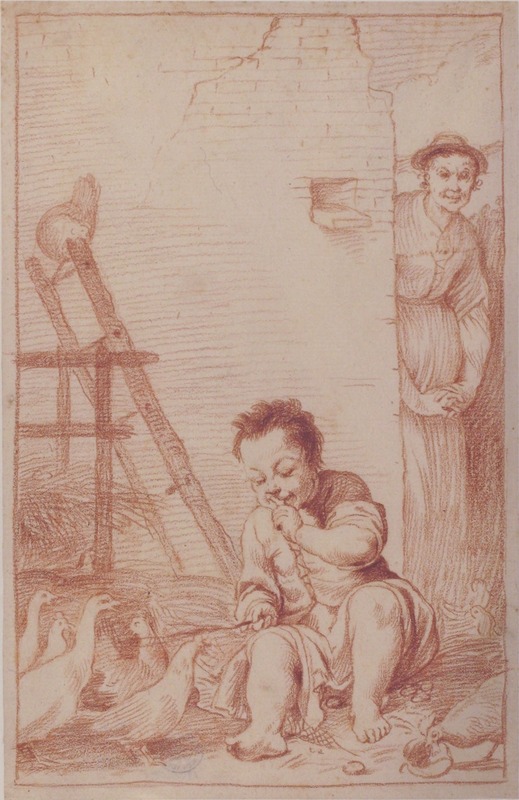
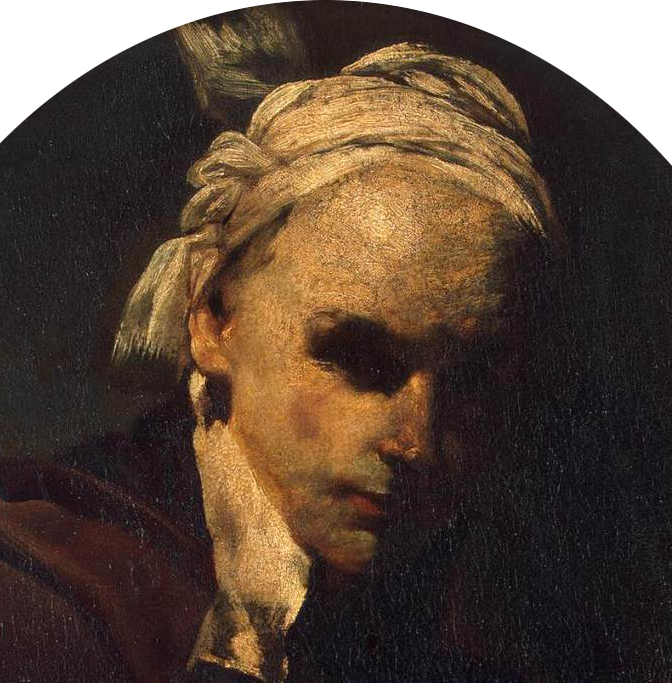
Giuseppe Maria Crespi, nicknamed Lo Spagnuolo ("The Spaniard"), was an Italian late Baroque painter of the Bolognese School. His eclectic output includes religious paintings and portraits, but he is now most famous for his genre paintings.
Giuseppe Crespi, together with Giambattista Pittoni, Giovan Battista Tiepolo, Giovan Battista Piazzetta, Canaletto and Francesco Guardi forms the traditional great Old Masters painters of that period.
Crespi was born in Bologna to Girolamo Crespi and Isabella Cospi. His mother was a distant relation of the noble Cospi family, which had ties to the Florentine House of Medici. He was nicknamed "the Spanish One" (Lo Spagnuolo) because of his habit of wearing tight clothes characteristic of Spanish fashion of the time.
By age 12 years, he apprenticed with Angelo Michele Toni (1640–1708). From the age of 15–18 years, he worked under the Bolognese Domenico Maria Canuti. The Roman painter Carlo Maratti, on a visit to Bologna, is said to have invited Crespi to work in Rome, but Crespi declined. Maratti's friend, the Bolognese Carlo Cignani invited Crespi in 1681–82 to join an Accademia del Nudo for the purpose of studying drawing, and he remained in that studio until 1686, when Cignani relocated to Forlì and his studio was taken over by Canuti's most prominent pupil, Giovanni Antonio Burrini. From this time hence, Crespi worked independently of other artists.
He journeyed to Venice, but surprisingly, never to Rome. Bearing his large religious canvas of Massacre of the Innocents and a note from Count Vincenzo Rannuzi Cospi as an introduction, Crespi fled in the middle of the night to Florence in 1708, and gained the patronage of the Grand Duke Ferdinand I de' Medici. He had been forced to flee Bologna with the canvas, which while intended for the Duke, had been fancied by a local priest, Don Carlo Silva for himself. The events surrounding this episode became the source of much litigation, in which Crespi, at least for the next five years, found the Duke a firm protector.
An eclectic artist, Crespi was a portrait painter and a brilliant caricaturist, and was also known for his etchings after Rembrandt and Salvator Rosa. He could be said to have painted a number of masterpieces in different styles. He painted few frescoes, in part because he refused to paint for quadraturists, though in all likelihood, his style would not have matched the requirements of a medium then often used for grandiloquent scenography. He was not universally appreciated, Lanzi quotes Mengs as lamenting that the Bolognese school should close with the capricious Crespi. Lanzi himself describes Crespi as allowing his "turn for novelty at length to lead his fine genius astray". He found Crespi included caricature in even scriptural or heroic subjects, he cramped his figures, he "fell in to mannerism", and painted with few colors and few brushstrokes, "employed indeed with judgement but too superficial and without strength of body".
Crespi is best known today as one of the main proponents of baroque genre painting in Italy.
Two of Crespi's sons, Antonio (1712–1781) and Luigi (1708–1779) became painters. According to their account, Crespi may have used a camera obscura to aid in depiction of outdoor scenes in his later years. After his wife's death, he became reclusive, rarely leaving the house except to go to daily mass.
